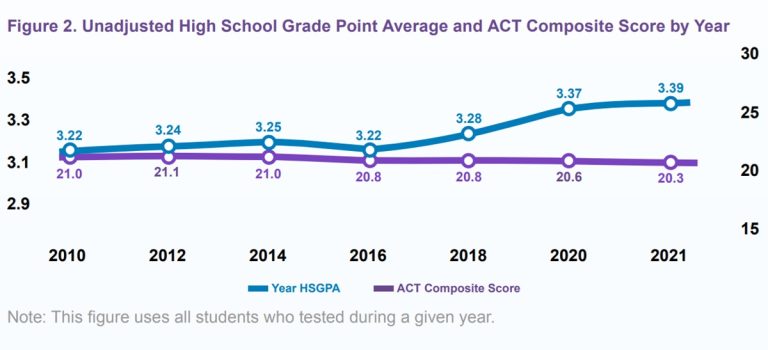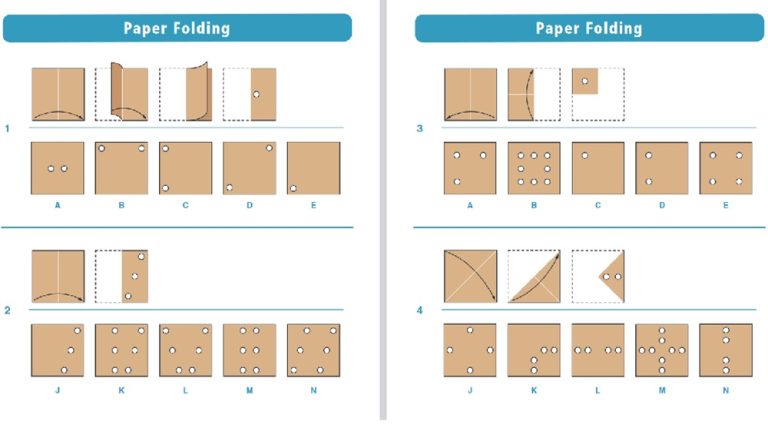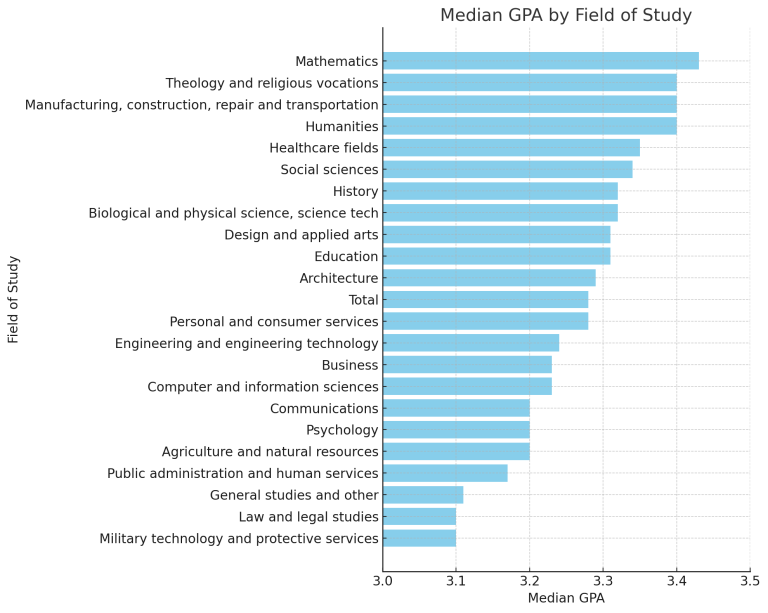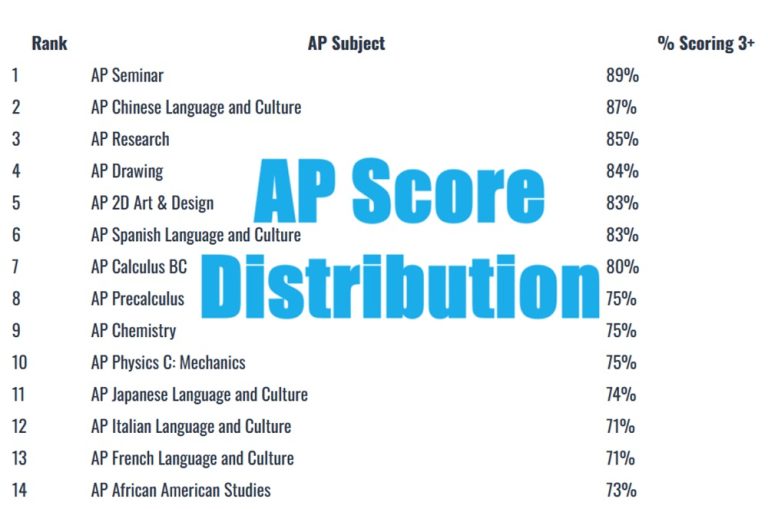What is a Good and Average SAT Score in 2024-2025? SAT Scores Range and Percentiles
What are SAT Scores?
The Scholastic Assessment Test (SAT) is a standardized test used for college admissions in the United States. SAT scores are a reflection of a student’s readiness for college and are used by admissions committees to compare applicants from a wide variety of high schools and backgrounds. The test measures proficiency in key areas such as reading, writing, and mathematics, which are essential for academic success in college.
SAT scores are used not only to determine eligibility for college admissions but also to award scholarships and assess academic potential. It’s a widely accepted measure for colleges across the U.S., making it a critical part of many students’ college application processes.
SAT Scores Range.
The total SAT score ranges from 400 to 1600, with two main sections: Evidence-Based Reading and Writing (EBRW) and Math. Each section is scored on a scale of 200 to 800.
- Evidence-Based Reading and Writing: 200–800
- Math: 200–800
- Total SAT Score: 400–1600 (sum of the two section scores)
The SAT also has subscores and cross-test scores that provide additional insights into specific skills, but they do not contribute to the main composite score. The maximum composite score a student can achieve is 1600.
SAT Section Scores.
The SAT is broken down into two primary sections:
- Evidence-Based Reading and Writing (EBRW):
- Reading Test: Measures comprehension of written passages, vocabulary in context, and evidence-based reasoning.
- Writing and Language Test: Evaluates grammar, usage, and rhetorical skills through editing and improving passages.
- Math:
- Covers topics like algebra, geometry, trigonometry, data analysis, and problem-solving.
- Divided into two parts: one allowing the use of a calculator and one without.
Both sections are scored on a 200-800 scale. The sum of the EBRW and Math sections gives the overall SAT composite score, which ranges from 400 to 1600.
Understanding Your SAT Score.
Understanding your SAT score involves more than just looking at the total score. Your score report will include detailed information that helps you see how well you did in each section and area tested. Here’s what you need to know:
- Section Scores: You’ll get separate scores for EBRW and Math, each ranging from 200 to 800. These two scores are combined to create your total score.
- Subscores: You’ll receive subscores for specific skill areas such as:
- Command of Evidence
- Words in Context
- Expression of Ideas
- Standard English Conventions
- Heart of Algebra
- Problem-Solving and Data Analysis
These subscores are reported on a scale of 1 to 15 and can help you identify strengths and weaknesses in specific areas.
- Percentiles: The percentile rank tells you how you performed relative to other test-takers. For example, if you score in the 75th percentile, you performed better than 75% of students who took the test.
- Cross-Test Scores: These scores (ranging from 10 to 40) reflect how well you performed on questions related to History/Social Studies and Science, which appear across both the Reading, Writing, and Math sections.
What is the Average SAT Score in 2024?
The average SAT scores for 2024:
According to the College Board, the mean average SAT scores in 2024 were:
- Total score: 1024
- Math: 505
- Reading and Writing: 519
What is a Good SAT Score in 2024?
A “good” SAT score depends on the schools you’re applying to. However, here’s a general guideline:
- Excellent Score: 1450–1600
- Competitive for top-tier schools (Ivy League, Stanford, MIT, etc.)
- Good Score: 1300–1450
- Competitive for highly selective schools
- Above Average: 1150–1300
- Competitive for less selective schools
- Average Score: 1025–1150
- Competitive for many public universities
- Below Average: Below 1025
- May still be acceptable for some schools, but other parts of your application (GPA, essays, extracurriculars) would need to be strong.
Ultimately, a good SAT score is one that meets or exceeds the average score range for your target schools.
Average SAT Scores in 2024 According to Gender, Race and Education Level.
| Category | Number of Test Takers | Percent | Mean ERW Score | Mean Math Score | Met Both Benchmarks | Met ERW Benchmark | Met Math Benchmark | Met None |
|---|---|---|---|---|---|---|---|---|
| Total Test Takers | 1,973,891 | 100% | 519 | 505 | 39% | 62% | 41% | 36% |
| Took Essay | 250,976 | 13% | 495 | 478 | 30% | 54% | 32% | 44% |
| American Indian/Alaska Native | 14,792 | 1% | 449 | 432 | 14% | 35% | 15% | 63% |
| Asian | 200,385 | 10% | 599 | 629 | 74% | 85% | 79% | 11% |
| Black/African American | 228,688 | 12% | 467 | 440 | 18% | 43% | 19% | 56% |
| Hispanic/Latino | 483,640 | 25% | 481 | 458 | 23% | 49% | 25% | 49% |
| Native Hawaiian/Other Pacific Islander | 3,498 | 0% | 475 | 452 | 21% | 47% | 23% | 52% |
| White | 725,962 | 37% | 551 | 532 | 51% | 76% | 52% | 22% |
| Two or More Races | 70,800 | 4% | 556 | 534 | 50% | 75% | 51% | 23% |
| Female | 990,760 | 50% | 522 | 496 | 37% | 64% | 38% | 35% |
| Male | 971,405 | 49% | 516 | 514 | 42% | 60% | 44% | 37% |
| Another/ No Response | 11,726 | 1% | 556 | 511 | 46% | 71% | 47% | 28% |
| English Only | 1,029,787 | 52% | 536 | 514 | 44% | 70% | 45% | 29% |
| English and Another Language | 325,634 | 16% | 534 | 530 | 45% | 66% | 48% | 32% |
| Another Language | 216,476 | 11% | 522 | 537 | 45% | 62% | 50% | 34% |
| No High School Diploma | 115,871 | 6% | 457 | 446 | 18% | 39% | 21% | 59% |
| High School Diploma | 375,167 | 19% | 491 | 470 | 26% | 54% | 28% | 44% |
| Associate Degree | 83,708 | 4% | 512 | 488 | 33% | 64% | 35% | 34% |
| Bachelor’s Degree | 479,404 | 24% | 560 | 548 | 55% | 80% | 57% | 18% |
| Graduate Degree | 401,330 | 20% | 597 | 589 | 68% | 86% | 70% | 12% |
What was the Average SAT Score in 2023?
According to the College Board, the mean average SAT scores in 2023 were:
- Total score: 1028
- Math: 508
- Reading and Writing: 520
How Does the New Digital SAT Test Differ from the Old SAT Test?
In 2024, the College Board introduced a digital SAT, which has a few key differences from the traditional paper-based version:
- Adaptive Format: The digital SAT uses an adaptive testing model. This means that the test adjusts the difficulty of questions based on the student’s performance in earlier parts of the test.
- Shorter Test Duration: The digital SAT is shorter, lasting about 2 hours and 14 minutes compared to the previous 3 hours for the paper-based test.
- Faster Results: Scores for the digital SAT are released more quickly, within days rather than weeks.
- Streamlined Questions: The digital SAT has fewer questions per section, but they are designed to provide the same insights into a student’s academic readiness.
- Security and Flexibility: Students can take the test on a computer or tablet, and the adaptive nature of the test prevents cheating by ensuring that each student gets a unique test experience.
Overall, the digital SAT is designed to be more accessible, student-friendly, and efficient.
How Long Does the SAT Test Take?
The 2024 digital SAT takes approximately 2 hours and 14 minutes to complete. This is a significant reduction in test length from the previous 3-hour paper-based version. Here’s a breakdown of the new digital SAT:
- Reading and Writing Section: 64 minutes (two stages of 32 minutes each)
- Math Section: 70 minutes (two stages of 35 minutes each)
This includes short breaks between sections, but the overall experience is streamlined to reduce fatigue while maintaining accuracy in testing students’ skills.
When Are SAT Scores Released? What Time Do SAT Scores Come Out?
SAT scores are generally released 2–3 weeks after the test date. However, with the new digital SAT, scores are expected to be available within days due to the efficiency of the digital format. This is much faster than the paper-based version.
Scores are typically released online through the College Board’s portal early in the morning, usually by 8:00 AM Eastern Time on the release date. You’ll receive an email notification when your scores are available.
SAT Percentile Chart for Composite SAT Scores.
Percentiles show how a student’s SAT score compares to other test-takers. Here’s a sample SAT percentile chart for composite scores.
Here is a detailed SAT Percentile Chart with more percentile breaks, including 99+, 99, 98, 96, 95, 90, 88, 85, 80, 75, and then every 5 percentile down to 5, with 2 and 1 percentiles included. The scores reflect approximate ranges for Evidence-Based Reading and Writing (EBRW), Math, and Total composite scores based on historical data:
| Percentile | EBRW Score Range | Math Score Range | Total Composite Score Range |
|---|---|---|---|
| 99+ (Best) | 760 and above | 790 and above | 1530 and above |
| 99 | 750-760 | 780-790 | 1510-1530 |
| 98 | 740-750 | 770-780 | 1490-1510 |
| 96 | 720-740 | 750-770 | 1460-1490 |
| 95 | 710-720 | 740-750 | 1440-1460 |
| 90 (Excellent) | 670-680 | 690-700 | 1350-1370 |
| 88 | 650-670 | 670-690 | 1320-1350 |
| 85 | 640-650 | 660-670 | 1300-1320 |
| 80 | 620-640 | 640-660 | 1260-1300 |
| 75 (Good) | 600-610 | 600-620 | 1200-1240 |
| 70 | 590-600 | 590-600 | 1180-1200 |
| 65 | 570-590 | 570-590 | 1140-1180 |
| 60 | 550-570 | 550-570 | 1100-1140 |
| 55 | 530-550 | 530-550 | 1080-1100 |
| 50 (Average) | 520-530 | 510-520 | 1050-1060 |
| 45 | 500-520 | 490-510 | 1020-1050 |
| 40 | 480-500 | 470-490 | 980-1020 |
| 35 | 460-480 | 450-470 | 950-980 |
| 30 | 450-460 | 430-450 | 920-950 |
| 25 (Below Average) | 440-450 | 430-440 | 870-900 |
| 20 | 410-440 | 400-430 | 820-870 |
| 15 | 390-410 | 380-400 | 770-820 |
| 10 (Poorer) | 370-390 | 350-370 | 720-770 |
| 5 | 340-370 | 320-350 | 690-720 |
| 2 | 330 and below | 310 and below | 670 and below |
| 1 (Poorest) | 310 and below | 300 and below | 650 and below |
Explanation:
99th percentile score means you scored higher than 99% of students, while a 50th percentile score is average, meaning you scored better than about half of the test-takers.






